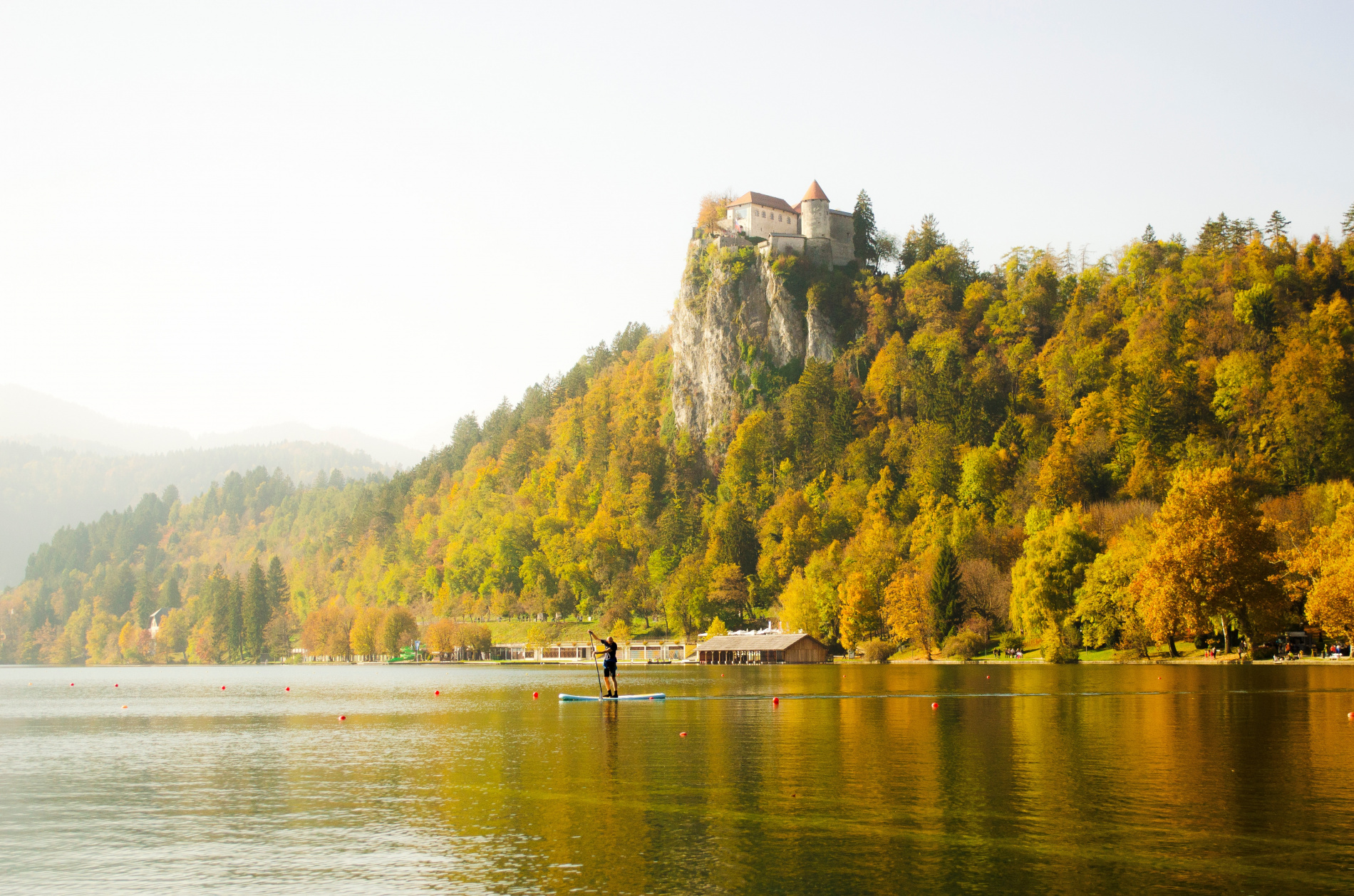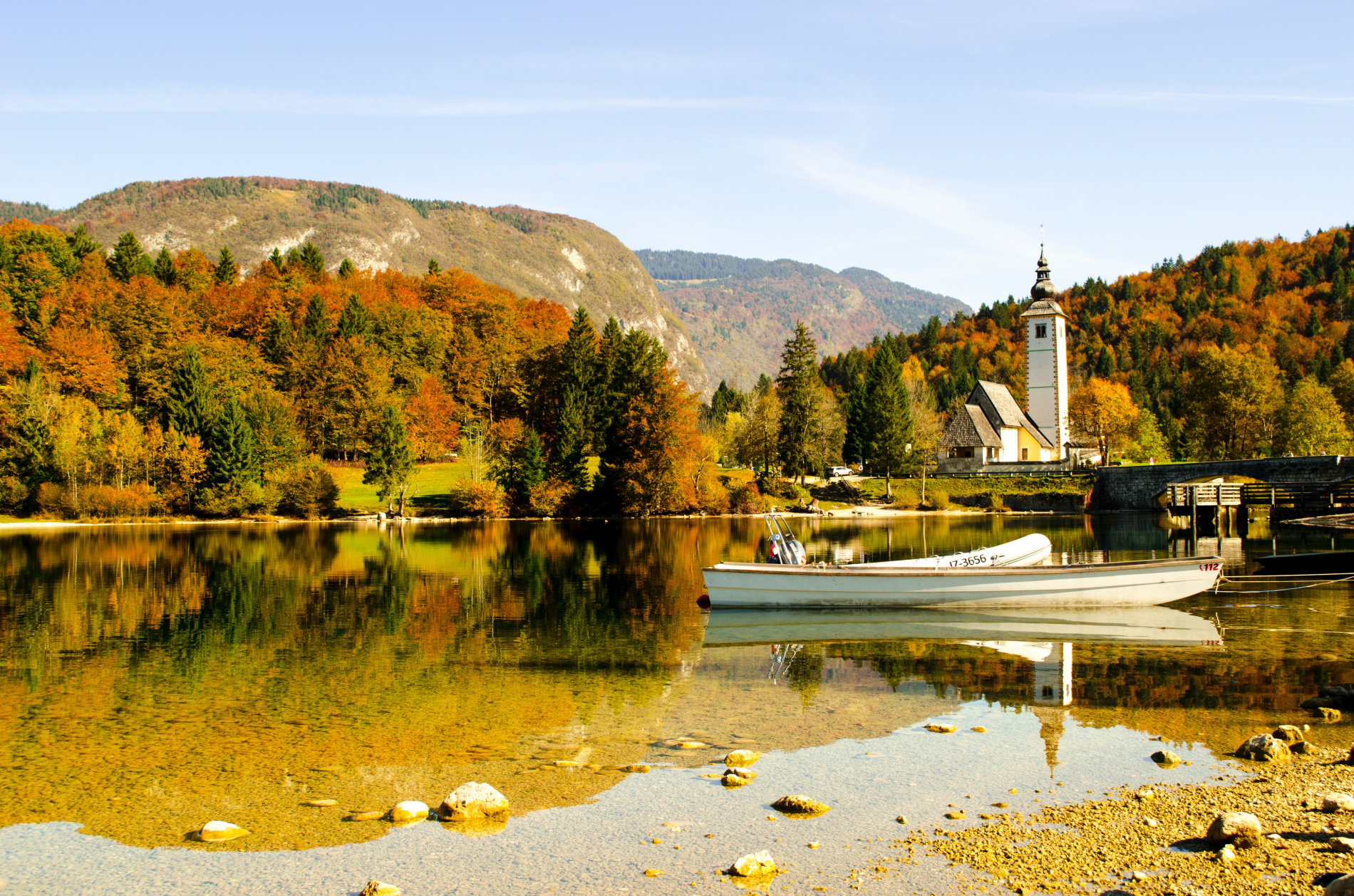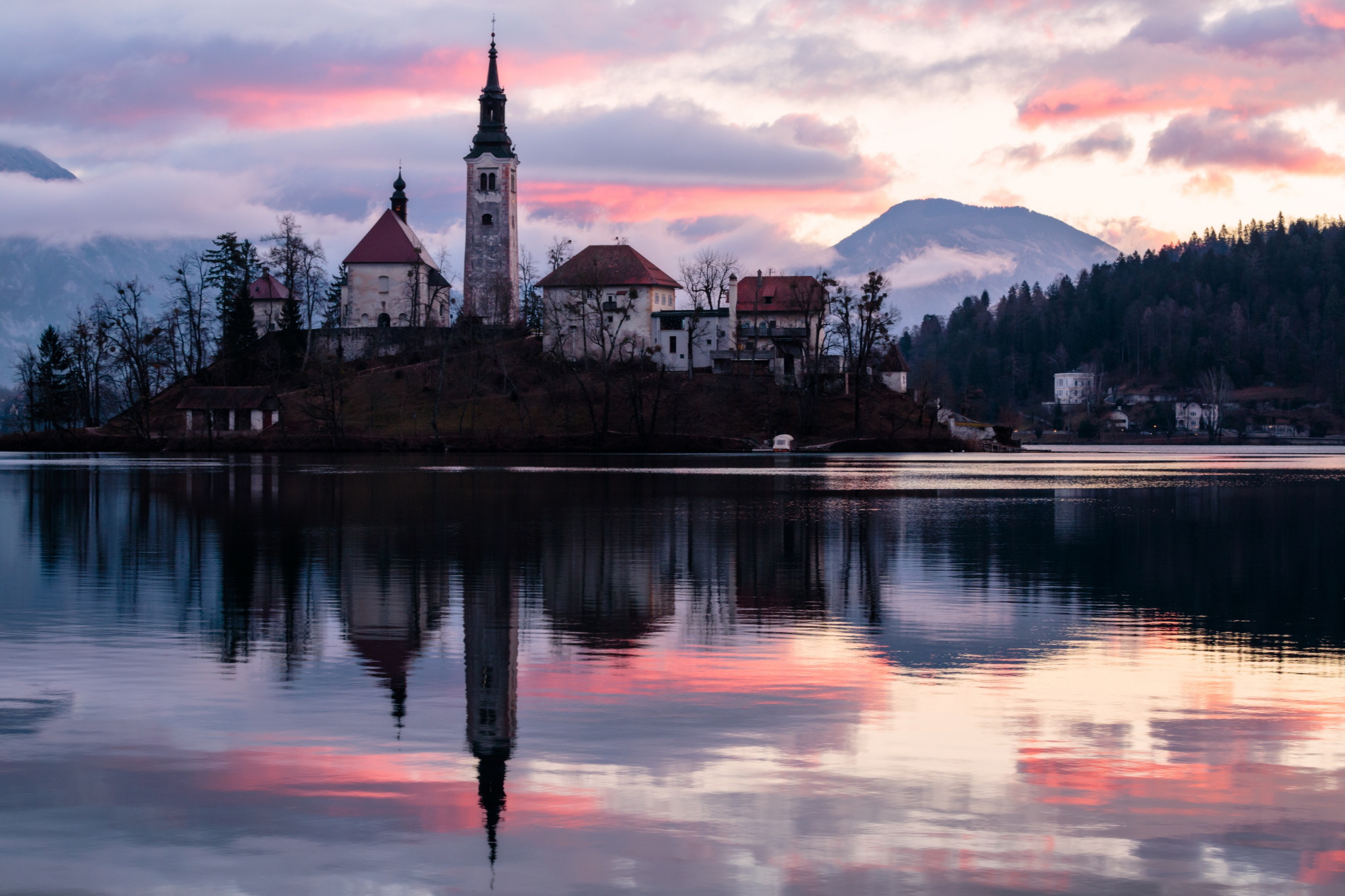A small country, half the size of Switzerland in the south of central Europe, Slovenia is packed with unusual and often unique attractions and experiences, from primeval forests to a lively and architecturally beautiful capital city, and from thermal springs to its mysterious karst (limestone plateau) caves.
The country is sandwiched between Italy, Croatia, Hungary and Austria, with a coastline on the Adriatic Sea to the south west.
Visitors to this picturesque corner of Europe can enjoy several amazing and contrasting experiences in the space of one day: start with a morning dip in the Adriatic, followed by a couple of hours skiing on Alpine slopes, then explore the subterranean wonders of the karst caves or become invigorated with a thermal bath, before strolling through vine-clad hills or ancient forests and ending the day in a sophisticated casino. Ideally though, it takes much longer than a day to sample all the delights of this fascinating country.
The vibrant capital city, Ljubljana, sports a mix of Baroque, Renaissance and Art Nouveau architecture, exuding an Austro-Alpine atmosphere gleaned from belonging to the Austro-Hungarian Empire for many centuries.
Finally, Slovenia boasts of having 2,000 hours of sunshine a year in which to enjoy all its offerings. The locals are proud to explain why visitors are enchanted with their country: Slovenia is the only country in the world with 'love' in its name! An up-and-coming European holiday destination, visitors are strongly urged to check out Slovenia before the inevitable effects of mass tourism begin to take hold.

General weather conditions: Slovenia has a Mediterranean climate on the coast, and a continental climate with mild to hot summers and cold winters in the plateaus and valleys to the east. Most of Slovenia's annual rainfall occurs during spring in the interior regions away from the coast. Winters are cold, particularly along the eastern part of the country and in the Slovenian Alps, which are often covered in snow during the winter period. The Slovenian coastline has a sub-Mediterranean climate while the interior regions have a continental climate with chilly winters and hot summers.
A city of culture and cuisine, boutiques, bars and hidden treasures, Ljubljana, capital of Slovenia, exudes the confidence of an architecturally beautiful city that has 5,000 years of fascinating history tucked under its belt. The magnificent Baroque, Renaissance and Art Nouveau edifices of its old town centre, and its many charming squares, emanate the atmosphere of a small town; while its lively cultural, scientific, educational and business communities leave no doubt that this is a modern city in tune with the times.

The borderless region known as the Schengen area includes the following countries: Austria, Belgium, Czech Republic, Denmark, Estonia, Finland, France, Germany, Greece, Hungary, Iceland, Italy, Latvia, Lithuania, Luxembourg, Malta, The Netherlands, Norway, Poland, Portugal, Slovakia, Slovenia, Spain and Sweden. All these countries issue a standard Schengen visa that has a multiple entry option that allows the holder to travel freely within the borders of all. It is highly recommended that passports have at least six months validity remaining after your intended date of departure from your travel destination. Immigration officials often apply different rules to those stated by travel agents and official sources.
Health
Typhoid and Hepatitis A vaccinations are recommended. In forested areas hikers should guard against tick bites, as tick-borne encephalitis and Lyme disease are a risk. Mains water is safe to drink, milk is pasteurised and local meat and produce safe to consume. Free emergency treatment is available from hospitals and private doctors contracted. Slovenia has a reciprocal health agreement with most EU countries, including the UK, providing emergency health care on the same terms as Slovenian nationals. EU travellers should take a European Health Insurance Card (EHIC).
Electricity
Electrical current is 220 volts, 50Hz. Round two-pin attachment plugs are most common.
Language
The official language of Slovenia is Slovene. Italian and Hungarian are also spoken in some communities.
Money
The Euro (EUR) is the official currency, which is divided into 100 cents. Banks offer the best exchange rates for cash and travellers cheques. Banking hours are 8am to 12:30pm, and 2pm to 6pm on weekdays, and from 8am to 12pm on Saturdays. Numerous bureaux de change are open outside banking hours throughout the country. ATMs are readily available in major cities. Credit cards are widely accepted by hotels, restaurants and shops.

Emergencies
Emergencies: 112
Safety
There are extremely few risks involved in travel to Slovenia. The threat of terrorism is low, as is the crime rate, however sensible precautions are advised with valuables.
Customs
A copy of a passport or other form of identification should be carried at all times.
Tipping
A 10% tip is expected in restaurants, hotels and by taxi drivers.